Pinterest has differentiated itself from the rest of social media – I invested in their stock the beginning of this year, and doubled my position during the COVID downturn. Premium members have seen these transactions in real time.
By positioning themselves towards hobbies and passions, users are increasingly turning to Pinterest to start new projects or try new things.
This is a refreshing change from the fake news and online bullying radiating from competing social media platforms, and it could be compelling for advertisers as well. Pinterest draws in active searches, similar to Google, versus their competitors who focus on passive searches.
Pinterest hasn’t conquered the market yet, and their stock is priced accordingly. I believe their brand gives them a legitimate shot at conquering the “virtual discovery market” – even if they don’t, they can significantly increase their monetization rates thanks to cornering the crown jewel of marketers, mothers.
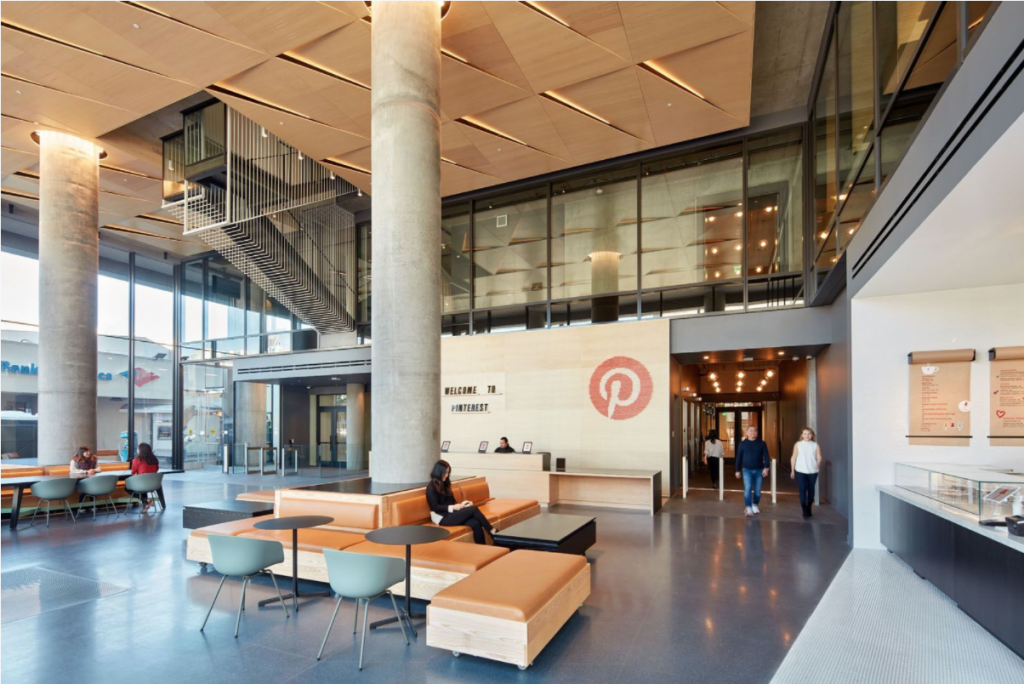
What Is Pinterest?
Pinterest is where 335 million people around the world go to get inspiration for their lives. They use Pinterest as a source of truth for anything ranging from: daily activities, cooking recipes, fashion, hobbies, or planning major events like a wedding or vacation.
These users are shown “Pins”, which are based on personal tastes and interests. Visual ideas help users imagine what their future could look like, making it far more efficient to digest compared to text.
Pinterest refers to themselves as a “visual discovery engine”. Google is great tool to get information quickly, but can be cumbersome if you don’t know what you’re looking for. A visual journey is more effective than text-based search if you aren’t sure what you need, and Pinterest bridges that gap.
How Is Pinterest Different?
Investors are right to ask why we need another Facebook, and rightfully so. When is the last time you felt better about yourself after logging off Facebook or Instagram?
Odds are, not often. Facebook activity is negatively correlated with your mood, and users generally feel like the time spent was wasted.
Compare this to Pinterest, where users are getting inspiration or starting a new project.
- 85% of users go to Pinterest first to “start a new project“
- 98% of Pinterest users try new things thanks to Pinterest
Not surprisingly, 91% of Pinterest users say the site is filled with positivity. This brand affiliation is a powerful moat against competing social media companies, drawing more users and more advertisers to the platform.
Why Should Advertisers Care?
Before digging into the stats, consider this thought experiment. If you were an advertiser, which would you be willing to pay more for: a Google search, or a Facebook login?
Google search is basically God – you ask Google something, and they give you the answer. Check out all the ads for a “baby yoda toy” search on Google:

Facebook, on the other hand, has no clue that I’m looking for a baby Yoda toy when I sign in. That’s because I don’t use Facebook to buy stuff, I use it to check all the birthdays I missed over the past several weeks.
So there you have it, active search like Google is a marketer’s dream, because you market something that the customer wants right now. Facebook, on the other hand, is passive, and their ads are more like billboards on a freeway.
What does this mean for Pinterest? Pinterest is the best of both worlds:
- Active searches when you research a specific topic
- Passive when you are at your homepage
When I search for “investing”, active ads pop up from The Money Manual & The Penny Hoarder, as well as a passive ad from Wikibuy.
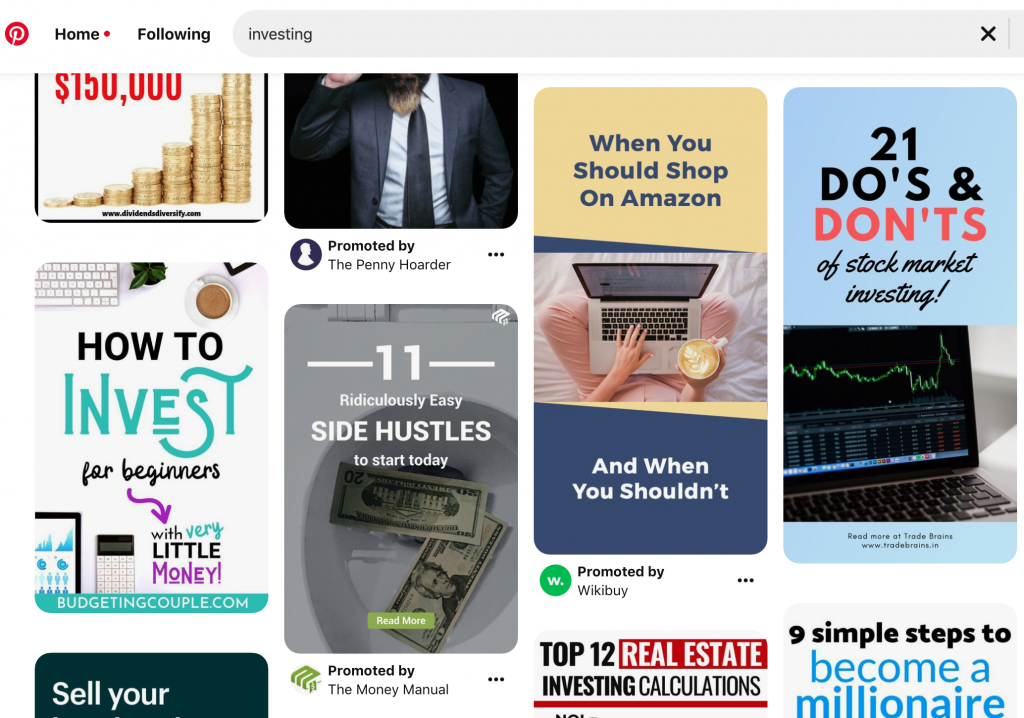
What’s great about these ads is that they feel helpful. In fact, 78% of users say it’s useful to see brand content on Pinterest. When is the last time you felt that way about a Twitter or Instagram ad?
Users Like to Shop on Pinterest
If we agree that active searches are more valuable, then Pinterest could be sitting on a gold mine. So far, the stats confirm this:
- 72% of Pinterest users shop when using the platform even if they aren’t looking for anything
- 70% of users discover new products through the platform
- 39% of households are more likely to buy an item they viewed on Pinterest
- 80% of United States users are mothers, which are the primary shoppers for 90% of households
How Pinterest Has Performed
Overall, Pinterest’s performance has been fairly solid. Monthly active users are up 26% year over year, and they have over 335 million monthly active users worldwide.
I say “fairly solid” because the United States is only up 8% year over year. Considering that Facebook has nearly 250 million monthly active users in the United States, 8% growth from 88 million users won’t cut it.
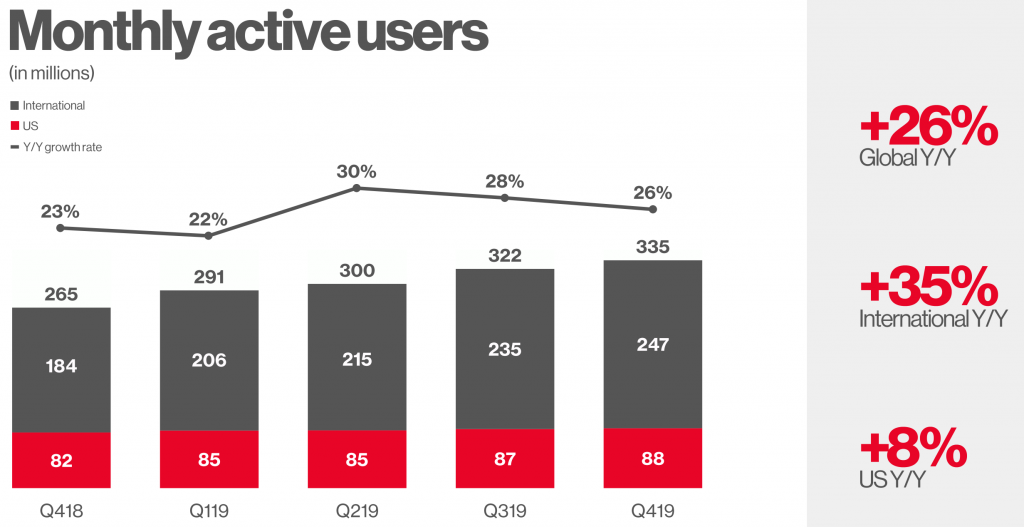
Why is US growth slowing? In one word: men. 71% of Pinterest users are females, and only 40% of new signups are men. Their minority representation is only going lower.
More importantly, men only account for 7% of pins on Pinterest. Once they sign up, they are about as active as the stereotypical man in a sitcom. Picture Homer Simpson, Al Bundy, or Peter Griffin on their respective couches, and you have the male Pinterest user in a nutshell.
How Is Pinterest Addressing User Growth?
So far, they aren’t, and are instead getting more juice out of the squeeze. Pinterest is boosting their advertising base in the United States, and are diving deeper into ecommerce.
In all fairness, this is the right move from a cash flow perspective. Pinterest already has the crown jewel for marketers, mothers. Any incremental dollar from them is worth more than a new male user.
However, this will be a problem in the long run. Social media is a game of scale, and men have projects and interests as well. Pinterest needs to fill this void before a competitor swoops in.
All dominant social media companies started with a niche – Facebook with Harvard, Twitter for bite-sized information, and Instagram for sharing images. Facebook has 250 million monthly active users compared to Pinterest’s 88 million. Thus, there are still 160 million American users up for grabs,.
If Pinterest doesn’t seize them, someone will, and the possible return on their stock will drop accordingly.
Average Revenue Per User Is Increasing
Speaking of getting more juice out of the squeeze, Pinterest increased their average revenue per user (ARPU) 26% in the United States, and 122% internationally, over the past year.
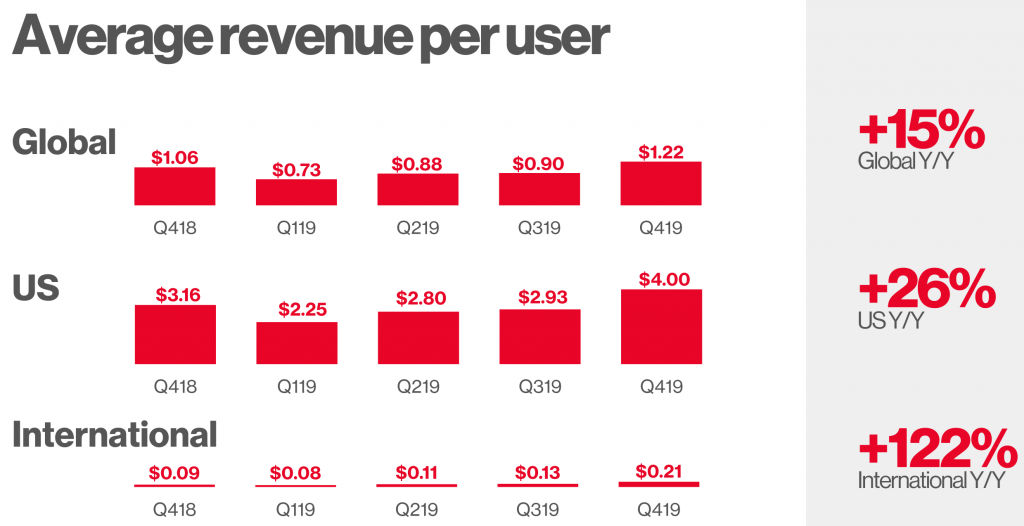
If United States ARPU is up 26% and International ARPU is up 122%, how is the global ARPU only up 15%? The drag is coming from international growth (35% vs 8% in the USA). Once again, growing users is not a bad thing, Pinterest will monetize them more in the future.
Speaking of monetizing, I believe Pinterest can make a lot more from each user. Consider the current stock market cap per user of Pinterest relative to their competitors:
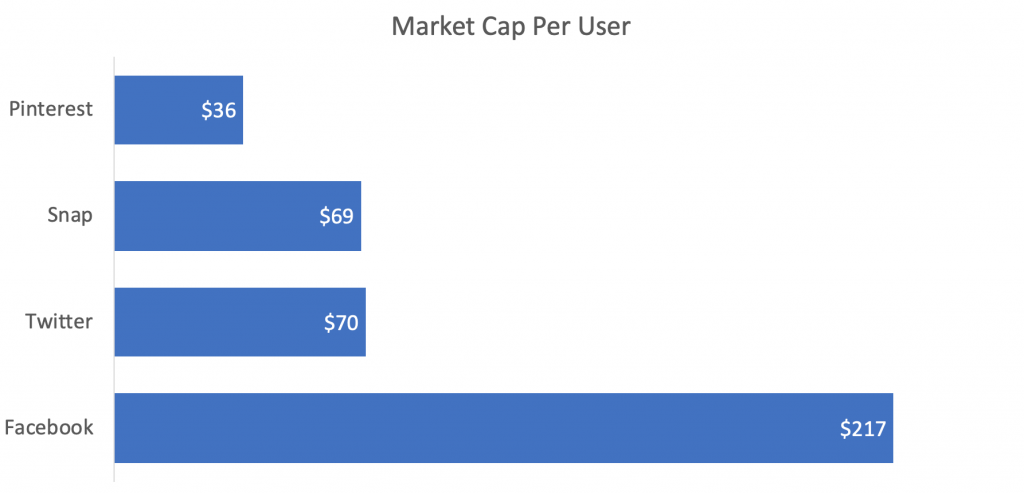
Pinterest’s market cap per user is nearly half of Snap and Twitter, despite having more user growth. This disconnect shows that Pinterest still has a lot of runway to monetize their existing user base. Expanding to ecommerce and growing their advertiser base is a start, and I’m sure that more announcements are on the horizon.
Revenue Growth is Solid
Which gets into our last metric, revenue. While this is normally addressed first, such as enterprise software companies like Pluralsight, I’m addressing this last for Pinterest.
Why? Because social media is more like the movie Field of Dreams, “if you build it, they will come”. If not, you have a sparse, empty area, which is as unappealing to marketers as Kevin Costner’s cornfield
With all of that being said, Pinterest has posted solid revenue growth, growing 46% year over year.
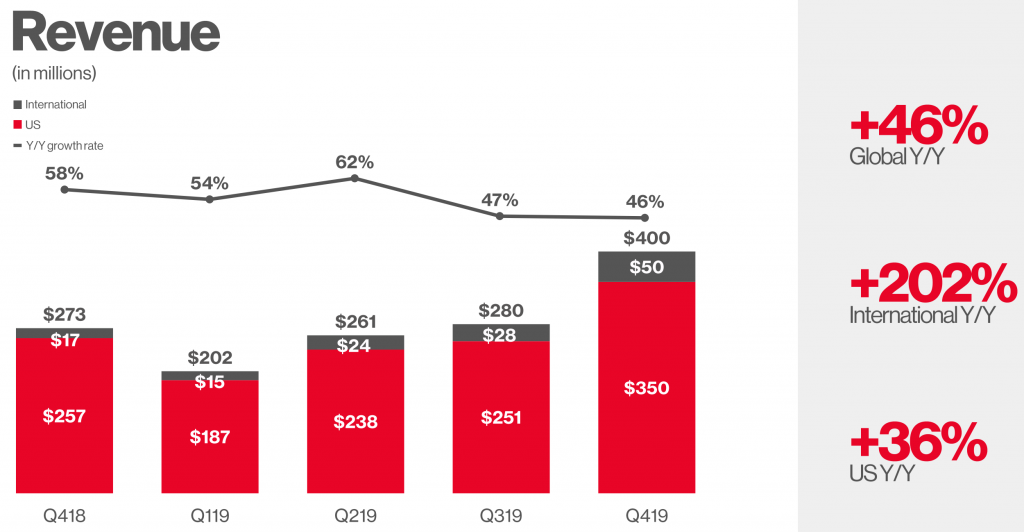
This should not be a surprise, given how much Pinterest is raising their user base and revenue per user. There’s a lot more juice that Pinterest can get from their existing users, especially on the international side.
Despite the long runway ahead of them, I hope Pinterest focuses on user growth first. More users will expand their network effect moat – thus adding more value, increasing lock-in, and driving more advertisers to the platform.
Why do advertisers work with Facebook? Not for their health. It’s because Facebook has 2.4 billion monthly active users. Similarly, Pinterest can command pricing power as they draw in more users.
Pinterest’s Stock & The Bias For Success
Unlike stock in cigarettes, casinos, and Facebook, Pinterest could be one of the few companies that make you rich, while also being a net benefit to society.
To be clear, this should have no bias on your portfolio. Ask SunEdison’s investors whether they care about the social good of solar power after losing everything to bankruptcy.
The public, however, might have a bias towards their success. Current social media titans are bombarding the commonwealth with fake news and online bullying.
Pinterest could be the beacon of hope that we’ve been looking for in social media. If this is realized, investors will be handsomely rewarded, along with society.